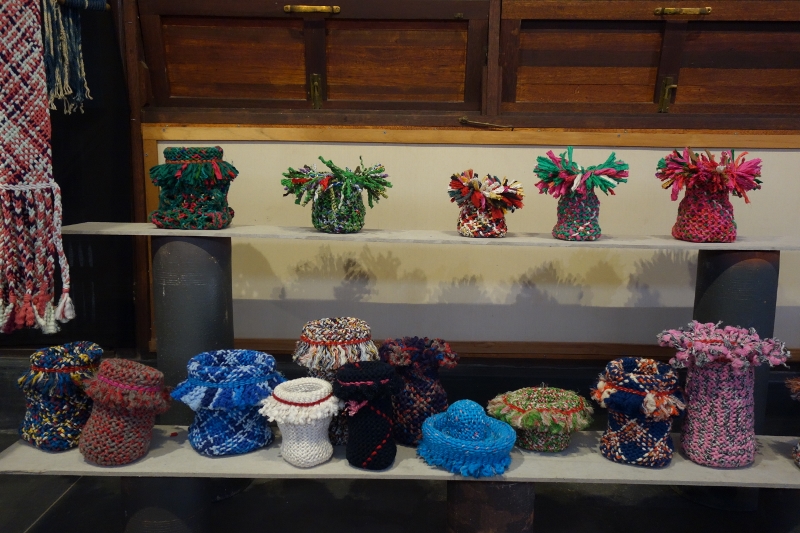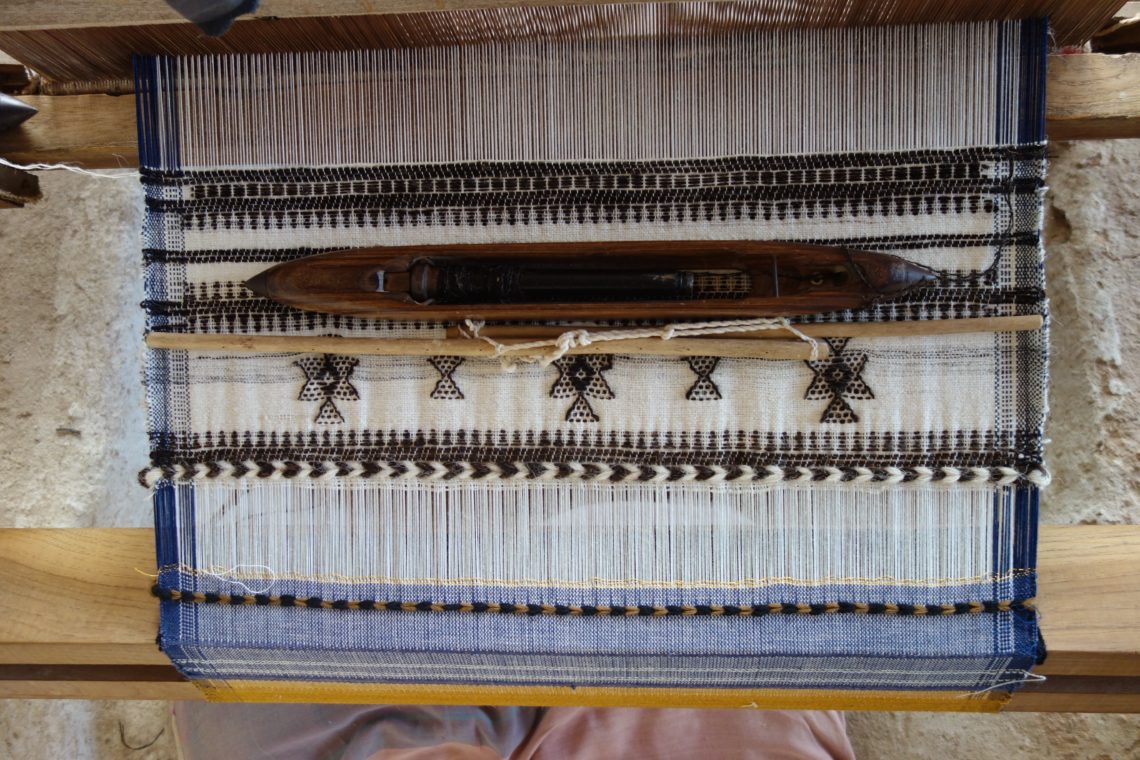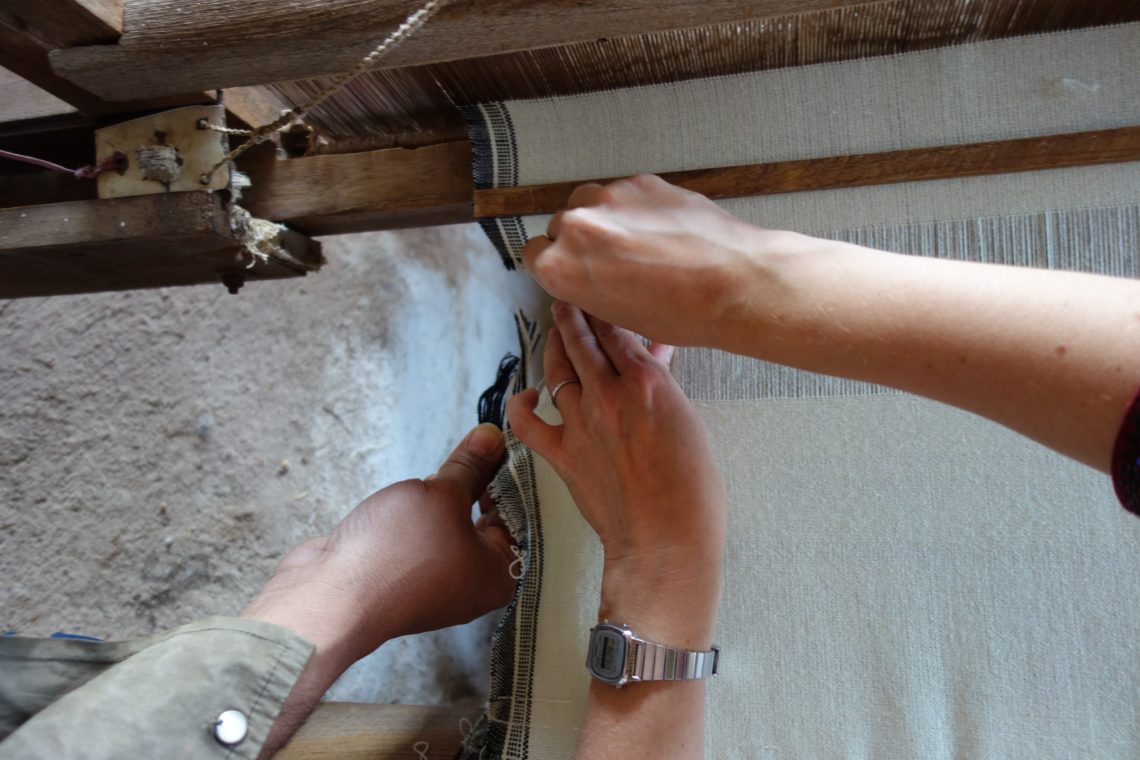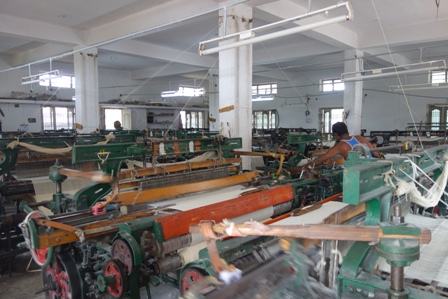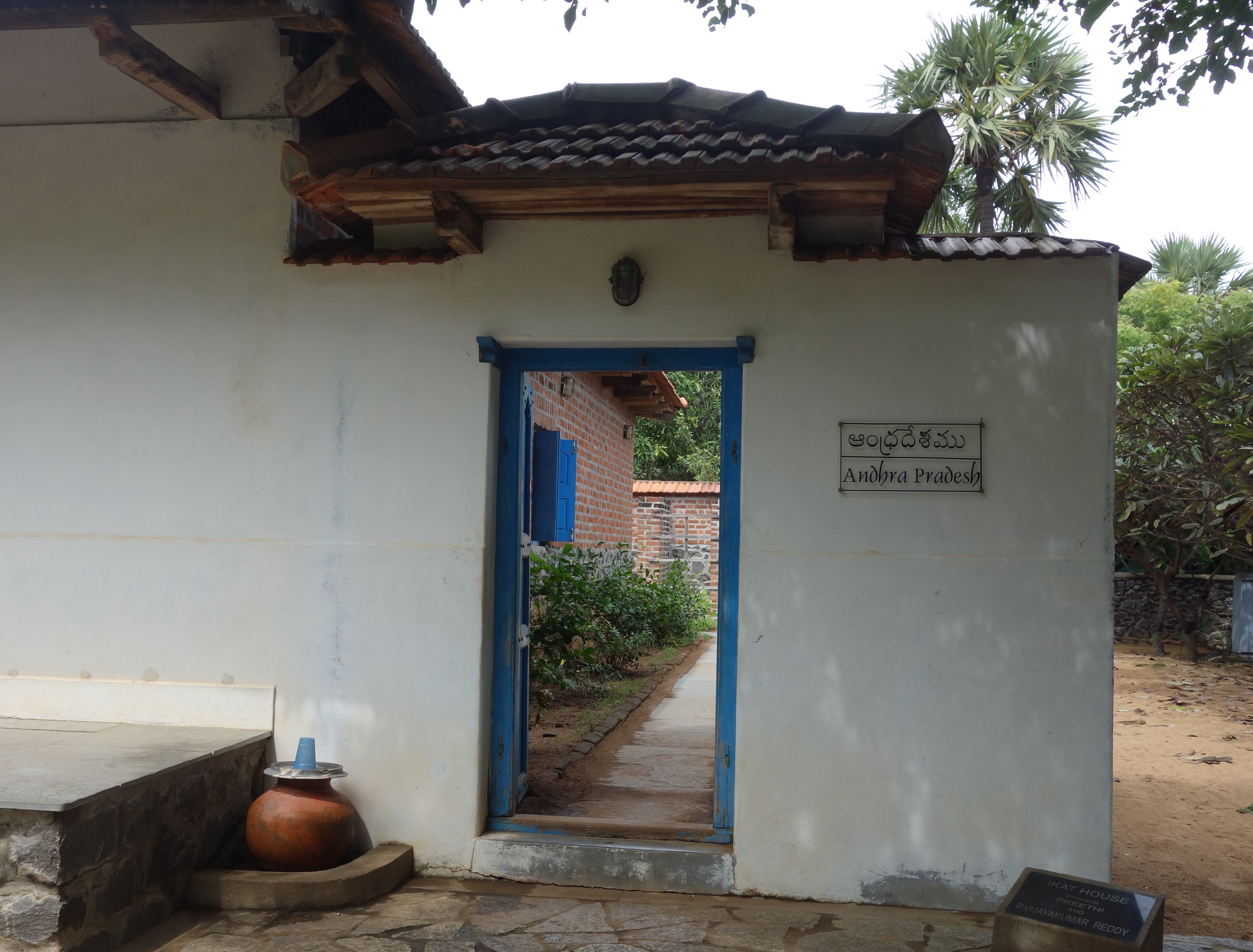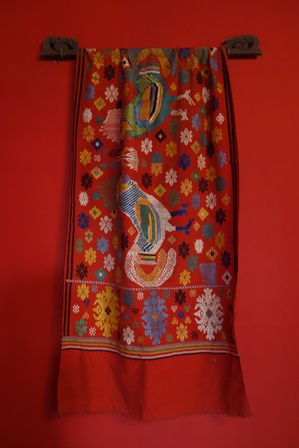Two exhibitions are currently being held at Khamir in Kukma village near Bhuj, Kutch. Read about Rohi: stories of the shoemakers of Kutch here. The second exhibition is Tang Ke Sang which showcases the unique and characterful ply-split braiding technique traditional to North West India, in the form of both traditional items and innovative interpretations by renowned maker Erroll Pires. History and technique The ply-split braiding technique, locally called ‘guthna’ as the English name suggests, involves splitting the ply of wool or cotton chords and interlacing them to create a very strong fabric. This fabric is therefore perfect for camel girths, harnesses and decorations which are made using this technique chiefly in North West…
-
-
Review: Stories of the shoemakers of Kutch
Above image: Artisans viewing the Rohi exhibition. Photo Courtesy of Khamir. Whilst I was in Kutch, I managed to see two excellent exhibitions at Khamir, a resource centre for the support and promotion of crafts in Kutch. Khamir’s serene and beautifully architectured campus which reflects the traditional buildings and village layouts of Kutch is situated at Kukma village 15 km from Bhuj city. As well as exhibitions on the local arts of Kutch which are easily accessible to the artisans involved as well as visitors and tourists, Khamir runs documentation and research projects, works with designers to create new craft based products and facilitates trade. The name of the current…
-
Weaving in Kutch: a guide (part 2)
This post focuses on learning the different techniques used in Kutchi weaving and a bit about the traditional products woven for the local market. Part one looks at the preparatory stages of weaving in Bhujodi. Read it here. Once I had completed my muffler and cut it off the loom it was time to start learning new types of weave. This week Rajesh Vishrambhai Vankar was to be my teacher. Rajesh is the youngest son of the renowned master weaver Vishrambhai and brother of Shamjibhai – also a well-known and respected master weaver. He graduated from Kala Raksha Vidhyalaya in 2009, and now works for the family business in various different…
-
Learning to weave the Kutchi way
For 21 days starting on the 28th December I learned the basics of weaving under the masterful and patient guidance of four skilled and experienced weavers from Bhujodi village in Kutch. The course was organised by Somaiya Kala Vidya whose primary aim is to teach design education to craftspeople of Kutch (find more information on SKV here and here). The ‘Crafts Traditions’ courses are a side project that aim to extend the awareness and appreciation of Kutch’s crafts further afield, welcoming visitors from all over the world to come and learn a new skill and also gain a deeper understanding of the crafts’ context. In three weeks I learned the whole…
-
The 2015 design graduates of Kutch – continued
There is a buzz of excitement in the region of Kutch as Somaiya Kala Vidya prepares for the convocation and fashion show of this year’s design graduates on 9th January in the village of Bhujodi, just 9 km from Kutch’s capital, Bhuj. In my previous post I wrote about the jury. The awards the jury decided will be presented during the convocation, and select pieces of the graduates’ final collections will be modelled on the runway. The graduates also got the chance to mingle with the Bombay craft and design enthusiasts and potential new clients at Artisans’ Gallery in Kala Ghoda for an exhibition of their collections from 21st –…
-
The 2015 Design Graduates from Kutch
Today is the last day of the 2015 Design batch of Somaiya Kala Vidya (SKV)’s exhibition at Artisans’ gallery, Mumbai. I attended the final class – Presentation and Merchandising, as part of my PhD fieldwork. There were eleven students on the course, four weavers, four ajrakh artisans and three bandhani artisans. Before this class, students had attended Colour, Basic Design, Marketing, Concept and Communication and Finishing and Collection Development. Each class lasts two weeks and they are spread over a year. During the weeks in between each, the students develop work at home based on what they have learned in the previous class. In Presentation and Merchandising, the students learned to display their…
-
Sircilla: a weaving industry fighting to survive
In Sircilla, a once thriving handloom town, there are now less than ten weavers, none of them under the age of 70, all looking as if they should have retired long ago. But the term retirement is unknown to weavers. They weave until they can physically weave no longer. There is not a single young handloom weaver here now. But then, where is the incentive to work in handloom when the earnings are just 80-100 rupees a day, while a powerloom weaver earns about 4 – 500 rupees because he can produce so much more? The government are supporting these handloom weavers while they’re still practicing but there is no…
-
Textile Travels in India: November
Highlights – Introduction to the weaving of Andhra Pradesh, Telangana, Tamil Nadu and Karnataka. – Meetings with influential and inspiring people in the textile and craft world in Hyderabad, Chennai, Bangalore, Kanchipuram. – Visit to Weavers’ Service Centres in the cities above and the Indian Institute of Handloom Technology in Salem. – Visit to shops, designers and NGOs creating innovative designs using local handloom fabrics. I’ve just arrived in Ahmedabad, via Pune on the same train I caught on my way down to Bagalkot two months ago, the Lokmanya Express. This time I was coming from Salem, about 80 km east of Coimbatore a big industrial hub known for its long…
-
A tour of artist Geeta Khandelwal’s Bombay home
On a recent visit to Bombay I was privileged to visit the home of eminent quilting artist, textile collector and author of Godharis of Maharastra, Geeta Khandelwal with Judy Frater and a group of artisan-designers from Kutch and Karnataka. The exhibition of Bhujodi and Bagalkot weaves and Suf and Lucknow embroideries (I have written about the project in a previous post) had finished the day before and there was a free morning before everyone had trains to catch home. The idea was for the artisans to experience the home of the kind of customer who buys their textiles, to further their market knowledge and have a first hand insight, which is…
-
Handloom journeys in India
I’m back in India again, and during the last two weeks I’ve been from Mumbai down to Bagalkot in Karnataka, back up to Mumbai then up to Kutch. I was in Bagalkot to visit the weavers of the Ilkal sari, named after the town of Ilkal, an ancient weaving centre. The sari is characterised by its cotton warp, art silk border and art silk pallu in bright reds and greens with shimmering motifs including temples, hanige (comb), koti kammli (fort ramparts), toputenne (jowar) and rampa (mountain range) on the pallu. Alongside Somaiya Kala Vidya’s (SKV) pilot course last year, they ran an outreach project, which involved three weavers from Bhujodi travelling…
